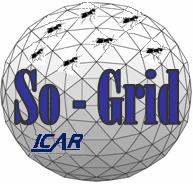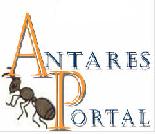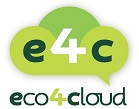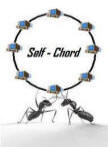|
|
I am co-founder and Research Director of Eco4Cloud, a spin-off from CNR and University of Calabria. Eco4Cloud commercializes a software that significantly improves the efficiency of data centers and Cloud infrastructures, leading to energy savings from 30% to 60% and to comparable reductions in carbon emissions. The software derives from years of research in the areas of Cloud Computing, data center management, bio-inspired algorithms, swarm intelligence. A paper that presents the mathematical foundation of Eco4Cloud, and the results of real experiments, has been published by IEEE Transactions on Cloud Computing, and is available here. |
Within ICAR-CNR, I am involved in projects that aim to experiment and assess the use of nature-inspired algorithms and protocols for Grid and P2P networks.
These algorithms follow the swarm intelligence paradigm: a number of entities perform simple operations at the local level, but these operations are combined at the global level so as to
engender an advanced form of intelligence and achieve complex objectives.
Other people involved in these projects are:
- Agostino Forestiero, Research Fellow at ICAR-CNR
- Giandomenico Spezzano, Research Director at ICAR-CNR
- Raffaele Giordanelli, Research Collaborator
- Fausto Pupo, Research Collaborator
|
Self-Chord prototype available (source code available)! |
Self-Chord is a P2P system that inherits the ability of Chord-like structured systems for the construction and maintenance of an overlay of peers, but features enhanced functionalities deriving from ant-inspired algorithms, such as autonomy behavior, self-organization and capacity to adapt to a changing environment. As opposed to the structured P2P systems deployed so far, resource indexing and placement is uncorrelated with network structure and topology, and resource keys are organized and managed by self-organizing mobile agents through simple local operations driven by probabilistic choices.
The benefits vs. classical structured systems
like Chord are essentially three: The prototype is available here!
|
 |
So-Grid is a set of P2P algorithms than can be adopted for the construction of a Grid information system. |
 |
Antares is a different P2P approach for the construction a Grid information system. |

